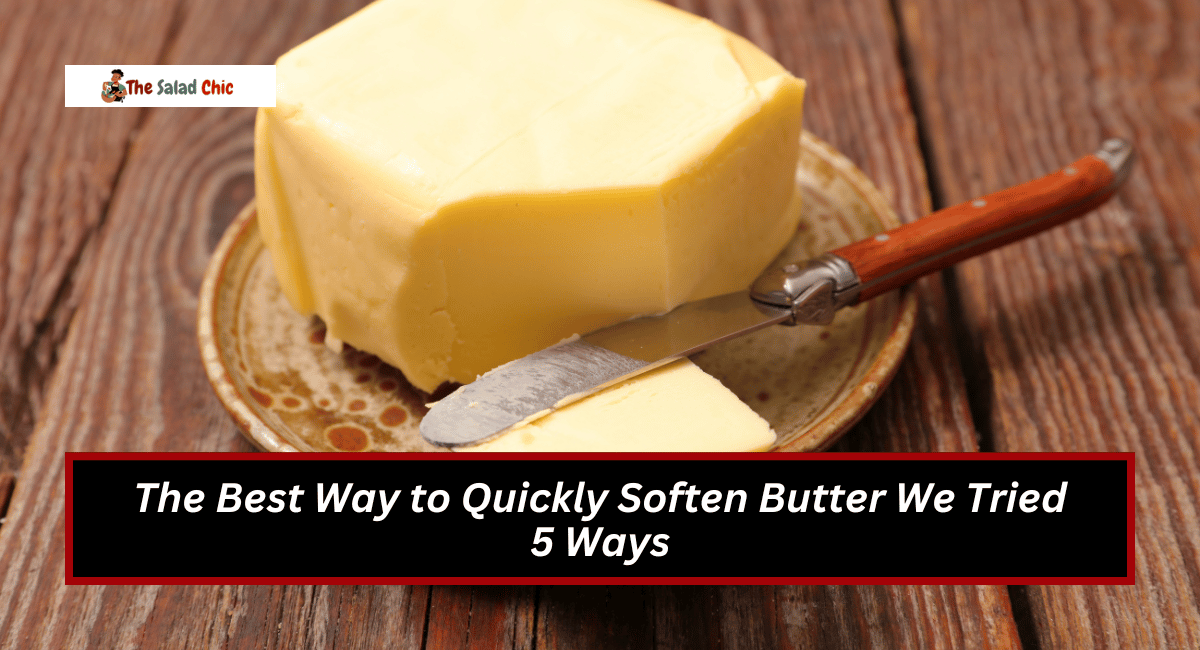We’ve all been there: you’re ready to bake, and then it hits you—you forgot to take the butter out of the fridge. That rock-solid stick of butter is mocking your plans for cookies or cake. What do you do? Your first instinct might be to microwave it, but that’s not the best idea.
Microwaving butter often leads to a melted, messy disaster. Over-softened butter can ruin your baked goods, leaving them dense and flat.
So, what’s the solution? Luckily, there are several quick and effective tricks to soften butter, and we’ve tested five of the most popular methods. Here’s how they stack up, ranked from best to worst!
The Defrost Setting Method
If you must use your microwave, this is the way to go. Cut the butter into smaller slabs and place them on a microwave-safe plate. Use the defrost setting and microwave for 10 seconds. Flip the butter, then microwave for another 5–10 seconds.
Why does this work? The defrost setting lowers the microwave’s power to about 30–50%, gently softening the butter without melting it.
Pros:
- Takes less than a minute.
- Easy and effective.
Cons:
- Requires careful timing to avoid over-softening.
Grating Butter with a Cheese Grater
Jennifer Garner’s trick involves grating cold butter using a cheese grater. Surprisingly, it works well! The cold butter grates easily, and the thin shreds soften quickly at room temperature.
How to do it:
- Grab a cheese grater and grate the butter onto a plate.
- Let the grated butter sit for a couple of minutes to soften further.
Pros:
- No special tools are needed.
- Great for small batches.
Cons:
- It’s messy near the end.
- Requires elbow grease!
The TikTok Hot Cup Hack
This method involves filling a cup with hot water, dumping it out, and placing the warm cup over the butter stick. In theory, the heat from the cup softens the butter in about five minutes.
Our experience:
Even after 10 minutes, the butter was only slightly softened. This trick is good if you have some time to wait, but it could have been more effective.
Pros:
- No mess.
- Hands-free softening.
Cons:
- Results may vary.
- Slower than other methods.
The Body Heat Hack (Front Waistband Version)
This unconventional method comes from Broma Bakery. Place the butter stick in the front of your waistband while you prepare your other ingredients. Rotate the stick every five minutes so all sides get equal body heat.
Our experience:
It took 20 minutes for the butter to soften slightly. While it’s hands-free, you’ll still be waiting around. Also, consider hygiene—this may not be the best choice if you’re baking for others.
Pros:
- Hands-free and multitasking-friendly.
Cons:
- Takes 20+ minutes.
- Questionable for food safety.
The Body Heat Hack (Back Waistband Version)
This variation involves sticking the butter in the back of your waistband. Unlike the front waistband trick, there’s no need to rotate. The side touching your back softens quickly, but the rest remains firm.
Our experience:
After 30 minutes, one side was very soft, while the other three were still hard. Plus, there’s the risk of butter slipping out of the wrapper—a messy situation you’ll want to avoid.
Pros:
- Hands-free method.
Cons:
- Inconsistent results.
- Risk of butter disaster.
The Defrost Setting Method
The defrost setting on your microwave is the clear winner. It’s fast, effective, and easy to control. Grating butter is another solid option, especially for small quantities.
If you’re in a real pinch, the hot cup hack works, but the body heat tricks are more of a last resort.
Conclusion
Softening butter doesn’t have to be a hassle. While the microwave defrost method is the fastest, there are other tricks to try, depending on your time.
Whether you grate butter, use a hot cup, or get creative with body heat, these methods can save the day when baking calls.
Now that you’ve got the scoop bake those cookies with perfectly softened butter—no frustration is required!
FAQs
Why shouldn’t I microwave butter at full power?
Microwaving butter at full power often produces uneven softening, with some parts melting while others remain hard. Melted butter can affect the texture of your baked goods, making them dense or greasy.
Can I use softened butter that’s slightly melted?
If the butter is only slightly melted, you can still use it. However, be cautious when baking cookies or cakes, as over-softened butter may not cream properly with sugar, affecting the texture.
How can I prevent butter from melting using the grater method?
To prevent melting, work quickly and use a cold grater. You can also chill your hands under cold water before grating to keep the butter from softening too fast.
What’s the best way to soften butter if I have 30 minutes to spare?
If you have 30 minutes, the hot cup method or simply leaving the butter on the counter is your best bet. These methods require no effort and produce evenly softened butter.
How can I store leftover softened butter?
If you’ve softened too much butter, store it in the fridge in an airtight container. It will harden again, but you can soften it later using one of the methods above.
READ MORE: Costco’s Heat-and-Eat Casserole Is Essential for Holidays

